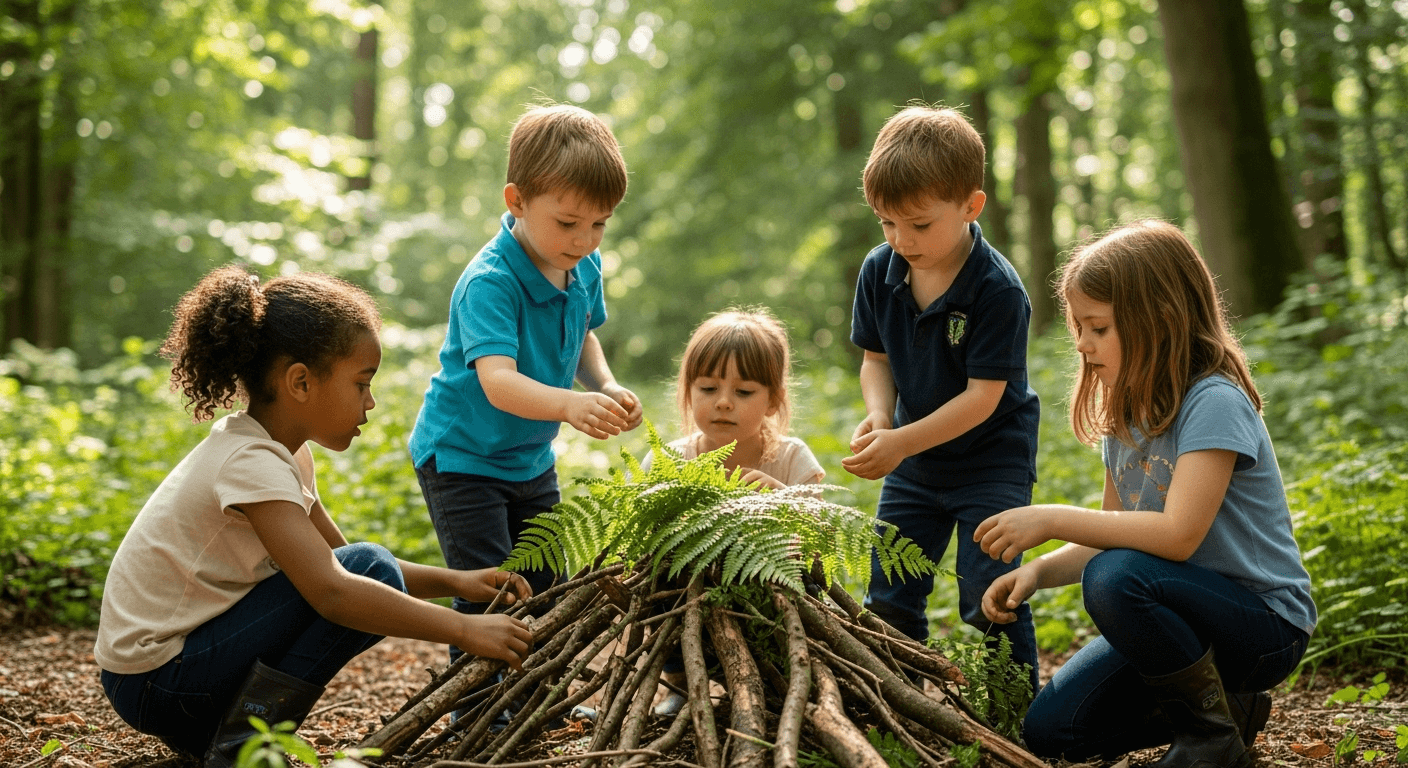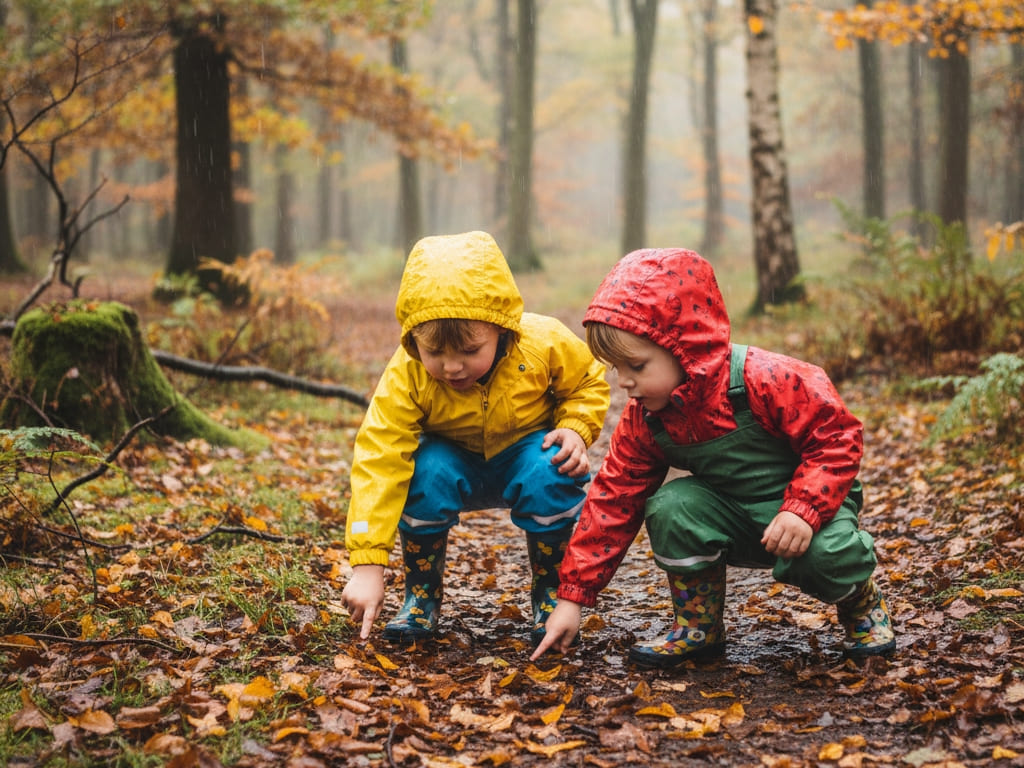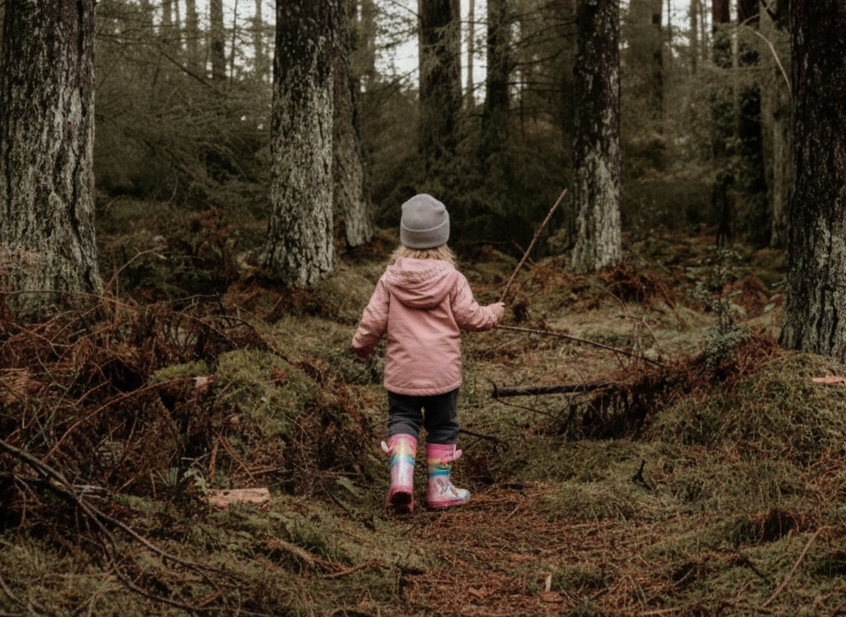· Forest School · 5 min read
10 Engaging Summer Forest School Activities
Discover 10 practical and educational Forest School activities perfect for the summer months. This guide offers straightforward ideas for parents and educators to help children develop new skills, creativity, and a strong connection with nature through hands-on outdoor play.

With long, bright days and nature in full bloom, summer is the ideal season for Forest School. Getting children outdoors for hands-on activities is more than just play; it’s a vital way to build their confidence, creativity, and practical skills. This guide provides ten straightforward Forest School activities designed for UK parents and educators to help children develop a genuine and lasting connection with the natural world.
Safety First: A Quick Reminder
Before you begin, always prioritise safety:
- Sun Protection: Ensure children have high-factor sun cream and hats.
- Hydration: Keep plenty of fresh water on hand.
- Appropriate Clothing: Advise long-sleeved tops and trousers to protect against scratches, ticks, and stings. Sturdy, closed-toe footwear is essential. For more detailed advice, you can read our complete guide to Forest School clothing or use our interactive clothing advisor tool.
- Plant Identification: Never allow a child to eat any plant, berry, or mushroom found in the wild unless you are 100% certain of its identity.
Creative & Sensory Activities
1. Natural Paintbrushes
Challenge children to create their own paintbrushes. They can gather materials like moss, ferns, grass, or pine needles and tie them to the end of a stick with string. This simple task develops fine motor skills and encourages them to think creatively about how everyday objects are made.
2. Mud & Berry Painting
Create natural paints for your new brushes. Mix soil with a small amount of water for brown paint, or carefully mash non-toxic berries like blackberries for vibrant purples. Use large leaves or pieces of bark as a natural canvas for their artwork.
3. Wildflower Pressing
Summer offers a beautiful array of wildflowers. Show children how to carefully pick a few common flowers and press them between the pages of a heavy book (using parchment paper to protect the pages). In a few weeks, the preserved flowers can be used to decorate cards or create a piece of natural art.
Construction & Engineering
4. Mini Den Building
Task children with building a small shelter fit for a woodland creature. Using only fallen twigs, leaves, and moss, they must construct a stable structure. This activity encourages problem-solving, engineering skills, and empathy for wildlife.
5. Natural Weaving Frame
This is a simple and effective way to create transient art. Help your child lash four sturdy sticks together at the corners with string to make a frame. They can then weave long grasses, flexible stems, and colourful petals through it to create a natural tapestry.
6. Dam Building
If you have safe access to a small, slow-moving stream, building a dam is an excellent group activity. Children can work together using rocks, mud, and sticks to alter the water’s flow, providing a brilliant, hands-on lesson in physics, teamwork, and understanding cause and effect.
Exploration & Practical Skills
7. Potion Making Station
Set up a dedicated ‘potion lab’ with a bucket of water and several smaller containers. Let children gather natural ‘ingredients’ like petals, leaves, and soil to mix their own magical concoctions. This is a fantastic activity for imaginative play, sensory exploration, and early scientific concepts.
8. Minibeast Identification Hunt
Equip children with a magnifying glass and a minibeast identification sheet (many are available online from organisations like The Woodland Trust). Search under logs and in leaf litter to see what you can find. This builds respect for even the smallest creatures and develops sharp observation skills.
9. Safe Whittling with a Peeler
Introduce basic tool use safely by giving a child a standard vegetable peeler to whittle a stick. Peeling away the bark is a satisfying, calming activity that improves fine motor control and concentration. This must always be done under close, one-to-one adult supervision.
10. Natural Trail Marking
Create a simple trail for others to follow. Using agreed-upon signals—such as two stones placed on top of each other or a stick pointing in a certain direction—children can lay a path through the woods. This activity develops spatial awareness, communication, and basic mapping skills.
Conclusion
The ten activities outlined here are more than just ways to fill a summer afternoon; they are foundational experiences. Each one is a carefully designed opportunity to nurture resilience, creativity, and problem-solving skills. By incorporating these simple, hands-on ideas into your routine, you provide children with rich, memorable experiences that support their holistic development and foster a genuine appreciation for the outdoors.
Frequently Asked Questions
What is the main purpose of Forest School?
The core purpose of Forest School is to provide children with regular, long-term opportunities for child-led learning and play in a natural, outdoor setting. It focuses on holistic development, helping children build self-esteem, creativity, confidence, and resilience through hands-on experiences.
What age is Forest School suitable for?
Forest School is beneficial for all ages, from toddlers to teenagers. Activities are tailored to the age and developmental stage of the participants. For younger children, the focus is on sensory and imaginative play, while older children may engage in more complex tasks like advanced tool use or conservation work.
What should a child wear for summer Forest School?
Even in summer, appropriate clothing is crucial. Always opt for long-sleeved tops and long trousers to protect skin from scratches, insect bites, and ticks. Sturdy, closed-toe shoes like walking boots or wellies are essential. A sun hat is a must, and it’s always wise to pack a light waterproof jacket, just in case.
Does Forest School happen if it’s raining?
Yes. Forest School is an all-weather activity. Rain provides a different sensory experience and new learning opportunities, such as observing how water moves, what shelter works best, and which creatures come out in the wet. Sessions are only cancelled in extreme weather conditions like high winds or electrical storms.



